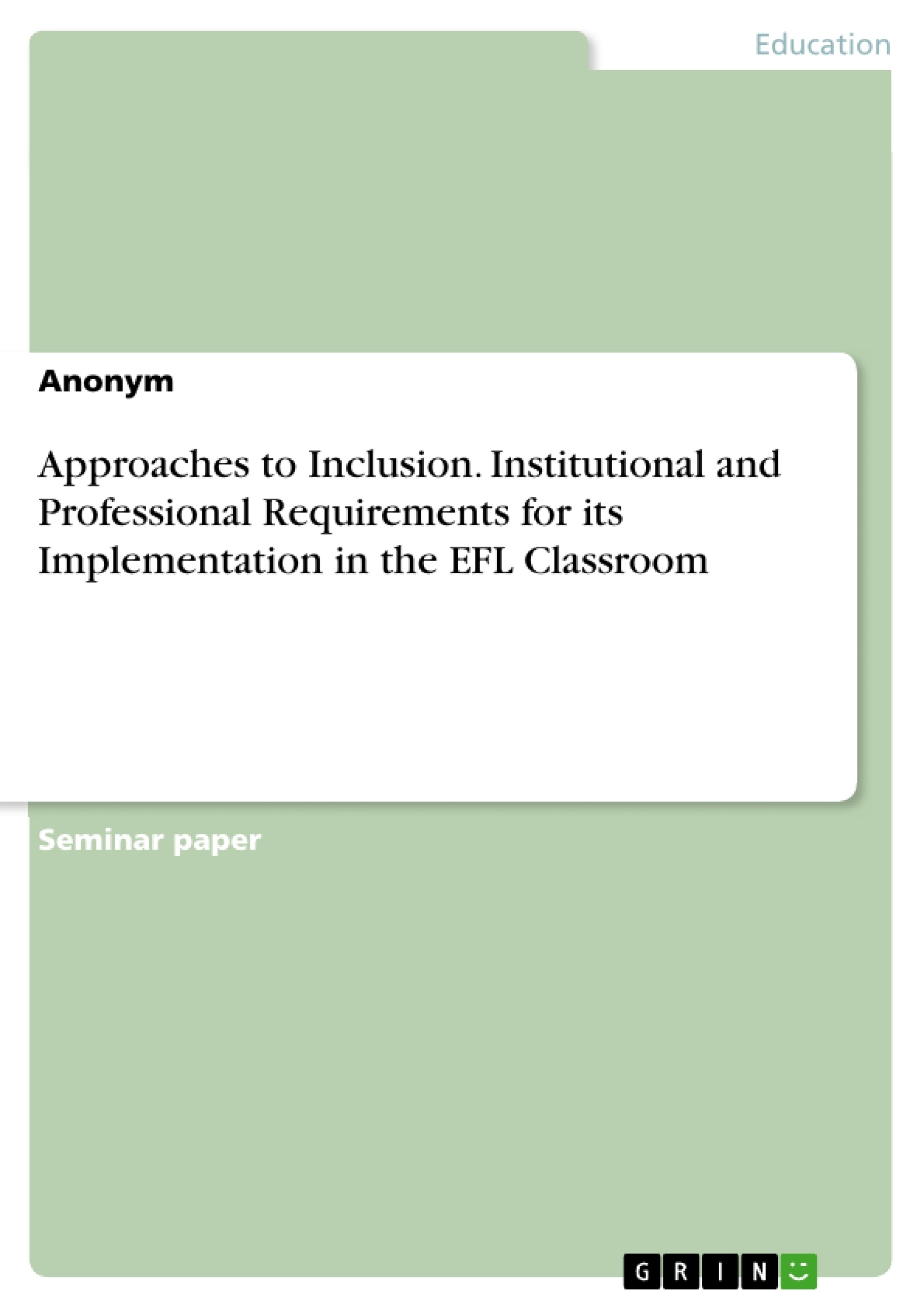When it comes to the topic inclusion, it is very hard to keep it simple, as the term itself carries a wide complexity and paradoxical elements. It opens up a broad field within the social, theoretical and practical contexts. Since The UN Convention on the Rights of Persons with Disabilities, inclusion became a legally binding right, and its implications within the educational system are immense. The concept of inclusive pedagogy and inclusive classroom became important to the EFL classroom.
Within the seminar Inclusion and Differentiation – Methods Embracing All Students in the Modern EFL Classroom, we concentrated for the most part on practical expressions of the idea of inclusion regarding inclusive didactics and inclusive methods. As a future teacher, I am grateful for any practical tools I can use to teach prospective students in the EFL classroom. However, the question that lingers is, why should I even care about inclusive didactics and methods in the first place? What is the basis and fundamental idea behind this? For me, this paper is a search for the reason why I should consider inclusive methods. I want to take a step back and inquire about the basics of inclusion. Where does it come from? What is its history within legal rights, and what concepts are there to define the term inclusion? How did the UN Convention affect requirements that relate to institutional and professional foundations?
The three main questions concern inclusion as a human right, concepts and definitions of inclusion, and the institutional and professional requirements of an inclusive school system. I will present scientific approaches and attempts to determine similarities and differences. I will start out with a selective chronological order of the legal historical declarations and conventions of inclusion, aiming to provide a basis for the definition of the term and its practical influence. The definition of the term inclusion is important to show the diversity of approaches and descriptions. I will start out with the comparison of inclusion to integration, and continue with its connection to inclusive schools and inclusive education. In the last chapter I will present structural necessities in the original form of the UN Convention and discuss requirements concerning the level of institutions and professionals.
Inhaltsverzeichnis (Table of Contents)
- Introduction
- Inclusion as a Human Right
- Universal Declaration of Human Rights (1948)
- Salamanca (1994)
- The UN Convention on the Rights of Persons with Disabilities (2006)
- What is Inclusion?
- Integration and Inclusion
- Inclusion and Inclusive Schools
- Institutional and Professional Requirements of Inclusive Education
- Structural Elements of Inclusive Education
- Institutional and Professional Requirements
- Conclusion
Zielsetzung und Themenschwerpunkte (Objectives and Key Themes)
This paper explores the concept of inclusion in the context of education, particularly within the EFL classroom. It aims to understand the historical and legal foundations of inclusion, examine its definitions and concepts, and analyze the institutional and professional requirements for implementing inclusive education.
- Inclusion as a human right and its legal basis in international declarations and conventions.
- The concept of inclusion and its distinction from integration.
- The role of inclusive schools and inclusive pedagogy in fostering an equitable learning environment.
- The institutional and professional requirements for implementing inclusive education.
- The importance of understanding and addressing the needs of diverse learners.
Zusammenfassung der Kapitel (Chapter Summaries)
The first chapter introduces the concept of inclusion and its complexities, highlighting the need for a deeper understanding of its origins and practical implications. It sets the stage for the paper's investigation into the legal, conceptual, and practical aspects of inclusion in education.
The second chapter examines the historical development of inclusion as a human right, focusing on key legal milestones such as the Universal Declaration of Human Rights, the Salamanca Statement, and the UN Convention on the Rights of Persons with Disabilities. It traces the evolution of inclusion from a general principle to a legally binding right, highlighting its significance in education.
The third chapter delves into the definition of inclusion, drawing distinctions between integration and inclusion and exploring the concept of inclusive schools. It emphasizes the importance of recognizing and valuing diversity in the learning environment.
The fourth chapter investigates the institutional and professional requirements for fostering inclusive education. It examines the structural elements of inclusive education and discusses the role of institutions and professionals in creating an inclusive learning environment.
Schlüsselwörter (Keywords)
This paper focuses on the key concepts of inclusion, integration, inclusive education, inclusive schools, human rights, legal frameworks, institutional requirements, and professional development. It emphasizes the importance of understanding and implementing inclusion as a foundational principle in education, promoting equity and access for all learners.
- Quote paper
- Anonym (Author), 2016, Approaches to Inclusion. Institutional and Professional Requirements for its Implementation in the EFL Classroom, Munich, GRIN Verlag, https://www.grin.com/document/418605



